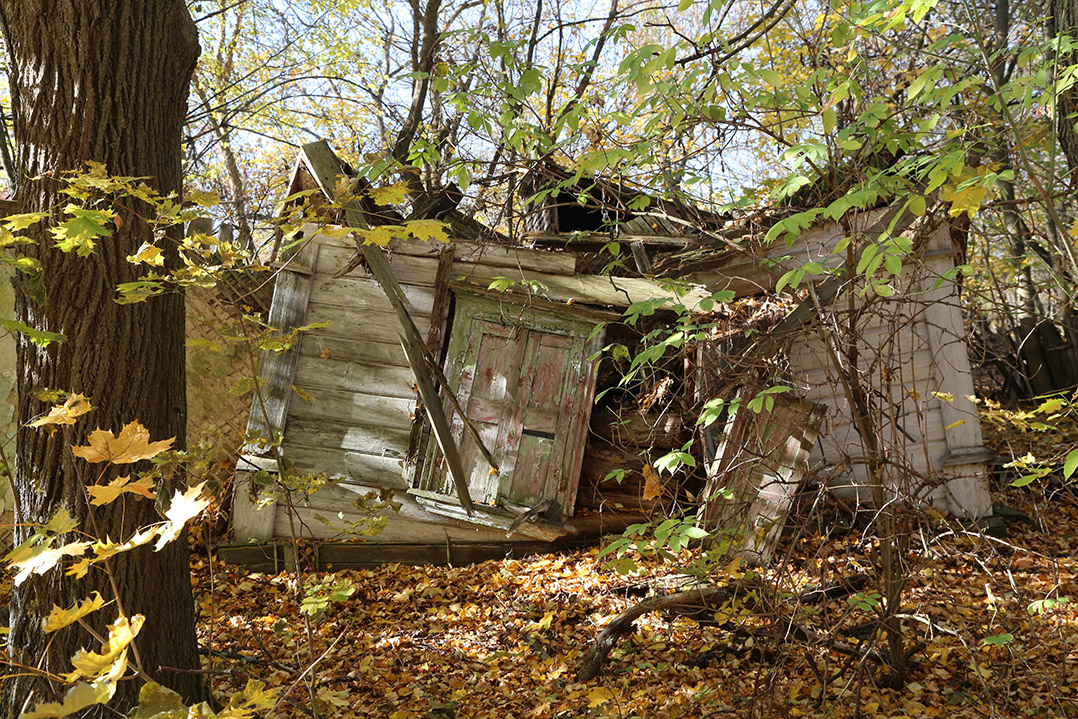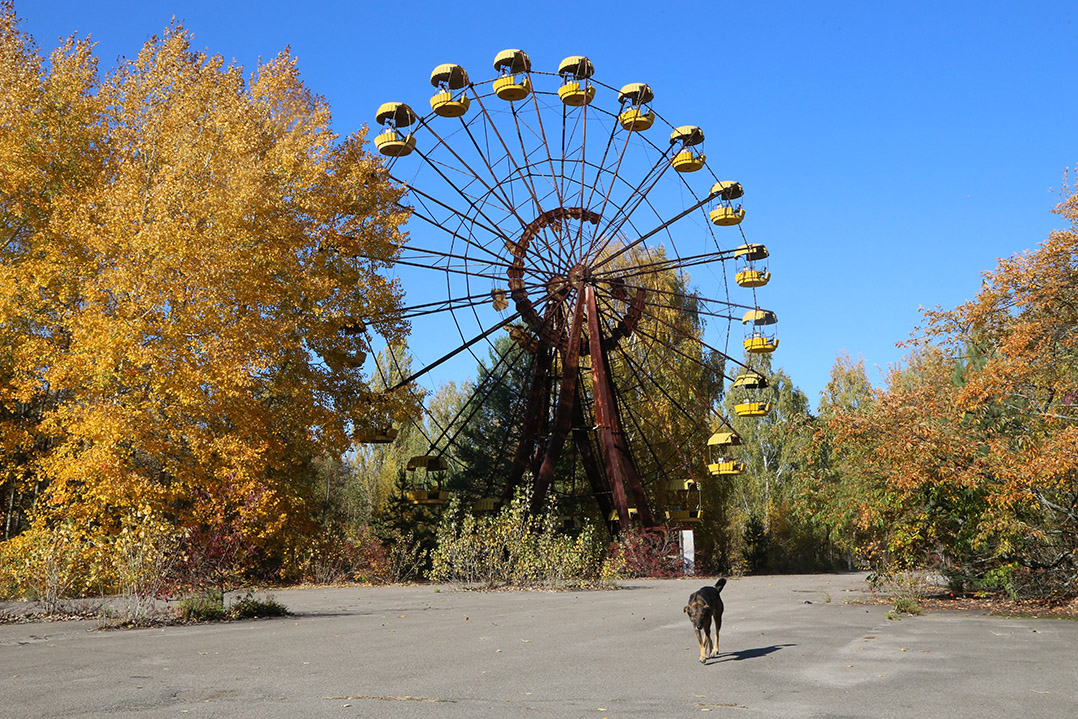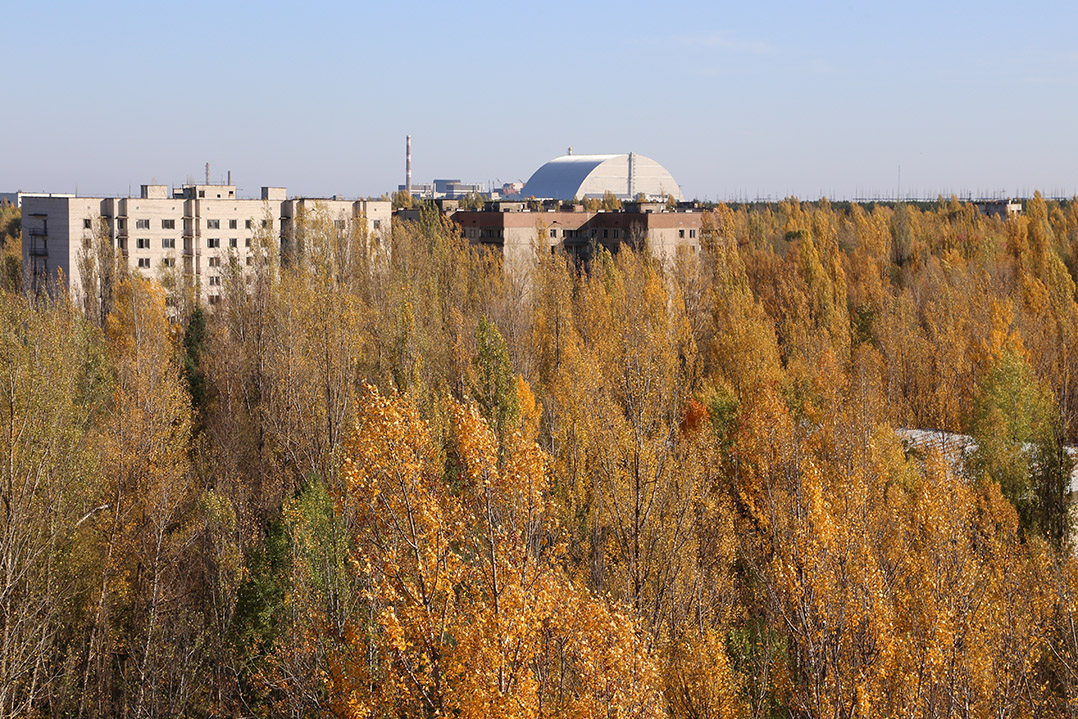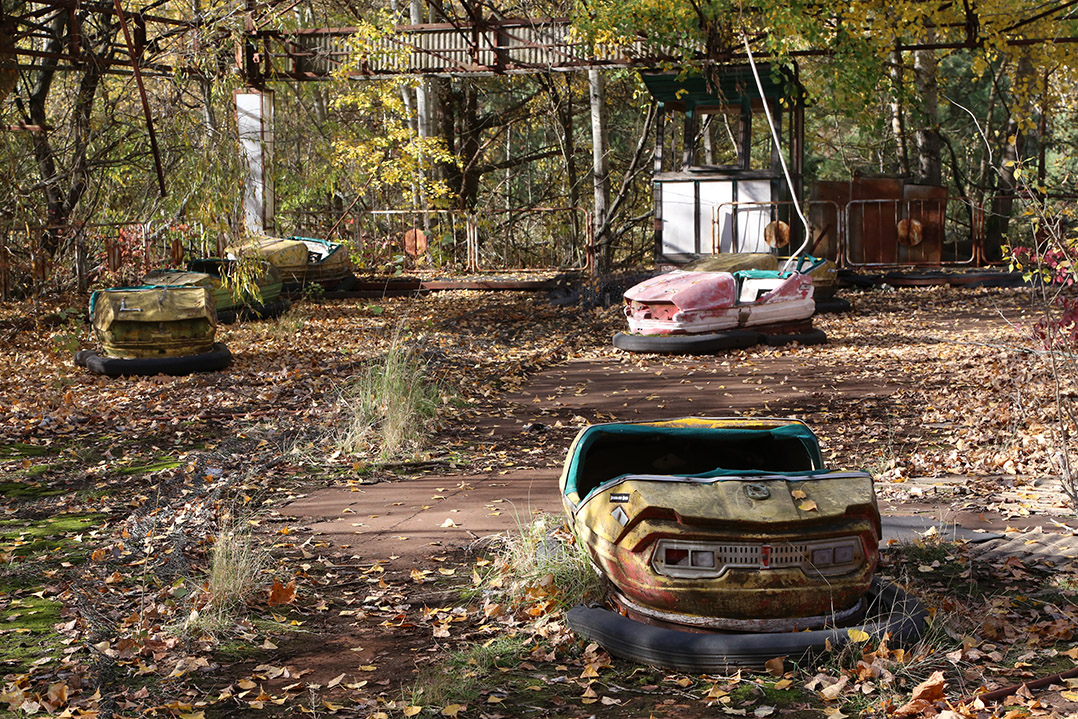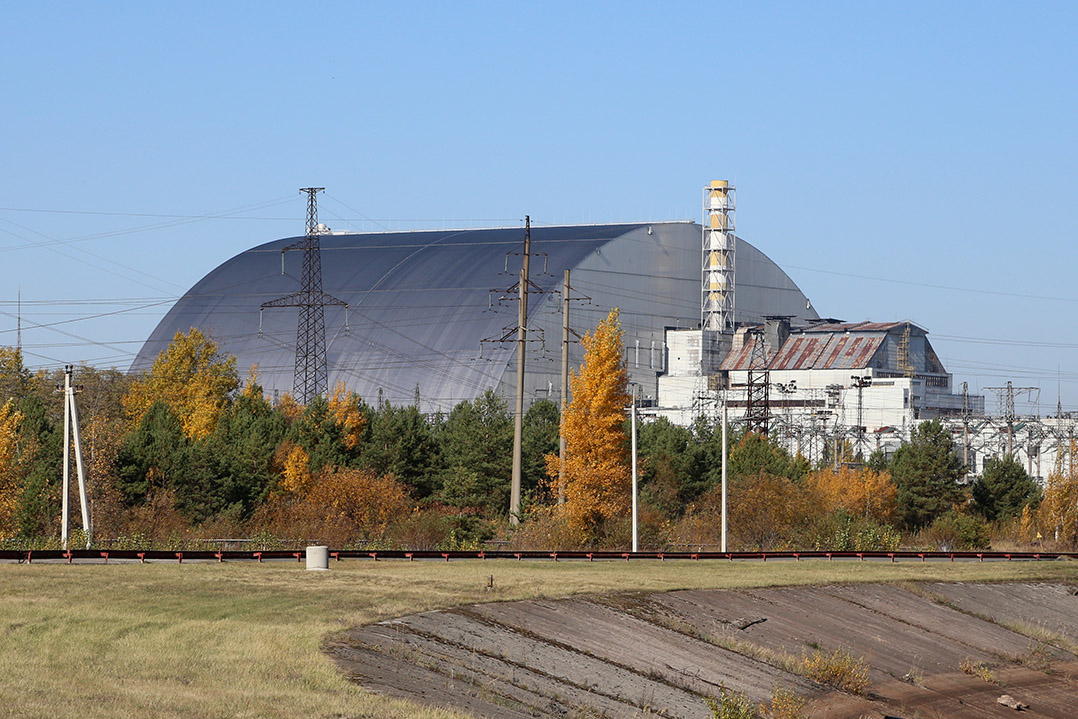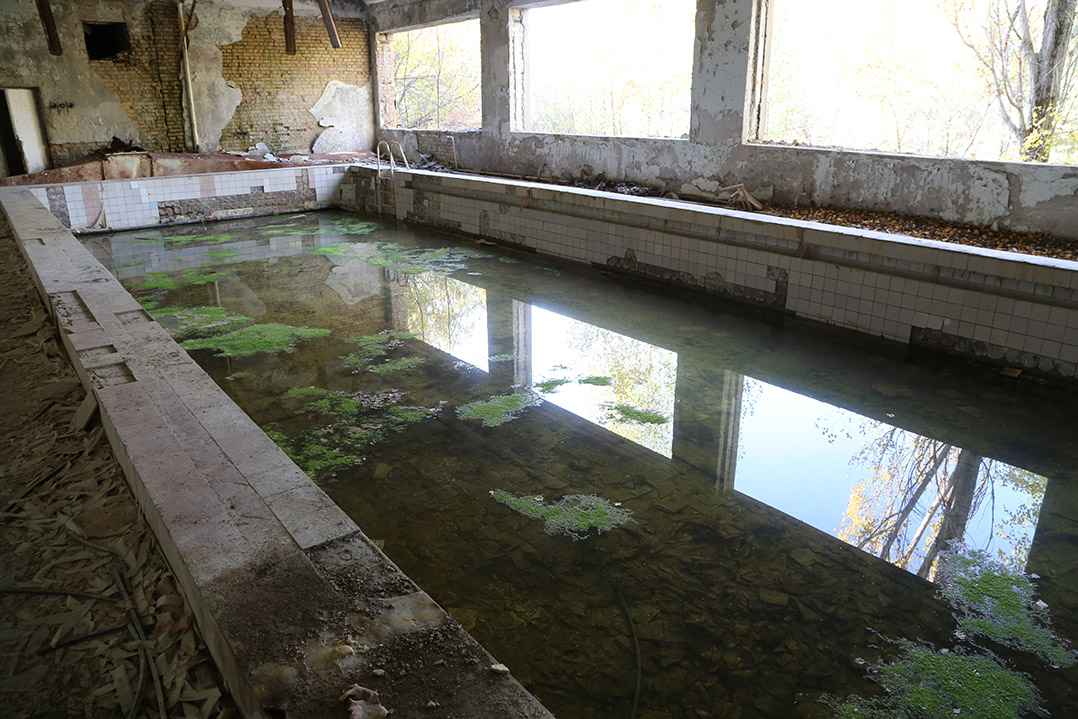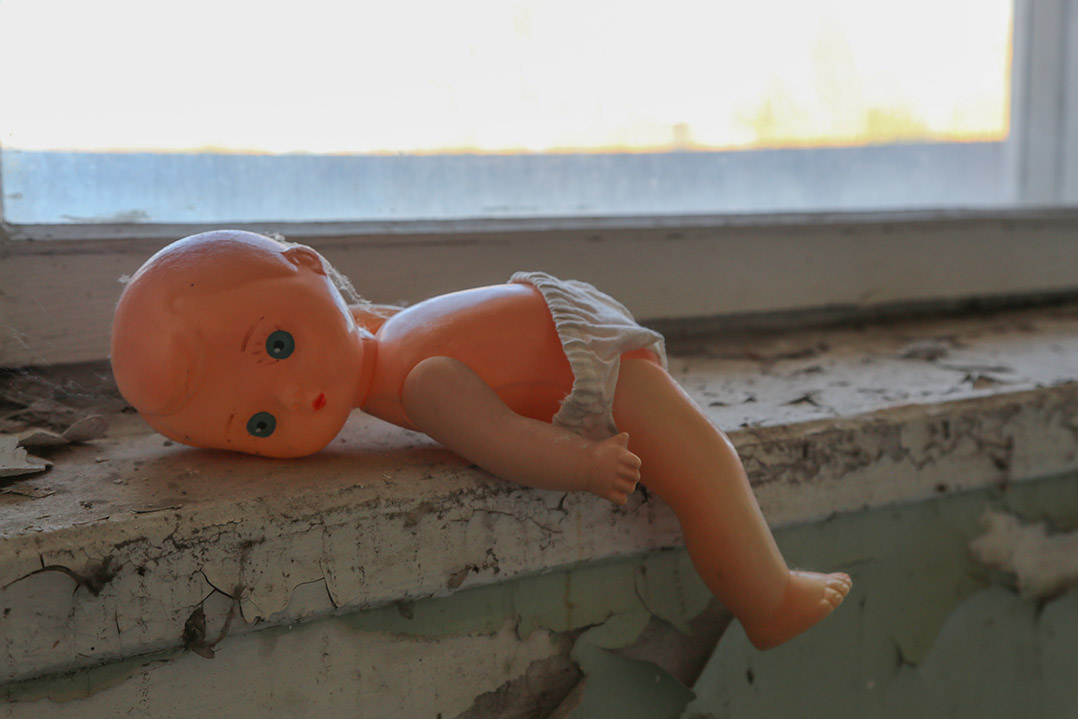It wasn’t quite Halloween yet when I found myself walking through a real ghost town, through eerily quiet streets that were full of people and promise not all that long ago.
On a stunningly beautiful day in mid-October, I visited the Chernobyl Exclusion Zone, a 1,000-square-mile area surrounding the nuclear reactor in the Ukraine that exploded in April 1986, the most devastating nuclear accident in world history. The disaster – which the former Soviet Union initially tried to downplay – led to the horrific radiation poisoning deaths of many first responders and long-term health consequences that many people in the region still face today.
Visitors to the Exclusion Zone must pass through checkpoints and wear a device that measures radiation picked up throughout the day. One day in the zone would be harmless, we were told; apparently, we absorbed more radiation on our seven-hour transatlantic flight.
The city of Chernobyl – which is 9 miles from the reactor – was our first stop upon entering the zone. Most of the homes there are caving in on themselves, with everyday items such as furniture and children’s blocks still visible through the missing windows and gaps created by the invasion of tree limbs.
A few of the houses appeared to be in much better shape than the others. Those are homes where people still live, our guide told us, despite the government’s many attempts to force evacuation. The handful of people who still call Chernobyl home have watched and waited as time and nature have joined forces to slowly erase any semblance of normalcy.
As we drove closer to the nuclear reactor, signs of life continued to vanish. Instead of houses, we saw mounds of buried dwellings, some topped by signs warning of continued high levels of radiation.
Soon, the infamous striped cooling tower and New Safe Confinement – completed in 2018 to keep radioactive particles inside – came into view. The area around the power plant was well-maintained in stark contrast to everything around it. That’s because, 33 years after the explosion, people still work there. The final reactor shut down in 2000, but the process of decommissioning a nuclear power plant does not happen quickly.
Our next stop was Pripyat, a city founded in 1970 to provide housing for the power plant’s workers and their families. Pripyat, home to nearly 50,000 people at the time of the disaster, is less than 2 miles from the reactor and is completely abandoned. The government evacuated the town approximately 36 hours after the explosion, and its inhabitants believed they’d be able to soon return home.
That never happened, and today the town is a monument to Soviet life. Pripyat was a desirable place to live, with multiple swimming pools, a sports stadium and an amusement park set to open less than a week after the explosion. Today, those structures still stand, some stronger than others.
What stands out most in my mind is walking through one of the many apartment buildings, catching glimpses of normalcy as I peeked into random rooms. A dust-covered piano in the corner. A shoe missing its match in the middle of a bedroom. A baby doll resting on a windowsill in the room of a girl who likely was the same age as I when the tragedy occurred.
The apartment building, more than anything else, tugged at my heart. Where are these people now? What losses have they suffered beyond homes? What happy memories once occurred within these crumbling walls?
Visiting Chernobyl gave me insight into the depth of a tragedy that shaped Ukraine and its people into what they are today. It also reinforced my belief in the power and necessity of a free media, as some of the consequences may have been lessened if journalists were allowed to immediately ask tough questions and report the truth.
Ann Marie Shambaugh is a Carmel resident and managing editor of Current in Carmel.


